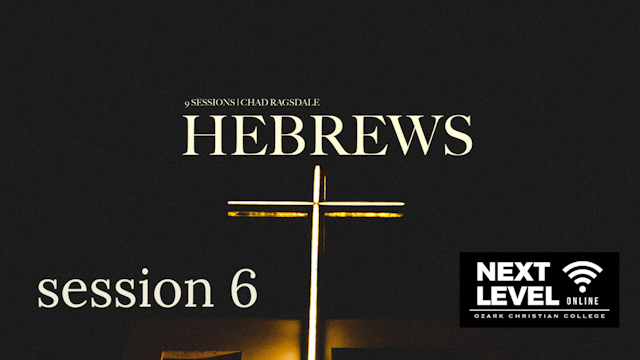Bridge


The vision of Ozark Christian College is to glorify God by evangelizing the lost and edifying Christians worldwide. The mission of Ozark Christian College is to train men and women for Christian service as a degree-granting institution of biblical higher education.
Introduction:
Making sense of the high priest:
The priest’s ephod and breastplate are both made from the same material used to make the tabernacle itself. Both use blue, purple and scarlet thread and employ the use of gold clasps or rings (Ex. 26:1, 6, 32, 37; 28:5, 23). The priest’s garments are also made of the same material as the veil separating the Holy Place from the Most Holy Place, so he is the walking embodiment of the tabernacle as well as the access point to the presence of God. It is particularly interesting that Hebrews calls Jesus’ own body the curtain opening the way to the Most Holy Place (10:20).
The breastplate of the high priest was also symbolic of his role as a bridge between God and the people. On each shoulder there was an onyx stone with the names of the tribes of Israel engraved. In this way, the priest “bears the names on his shoulders as a memorial before the Lord” (Ex. 28:12). He also had 12 precious stones on the breastplate each containing the name of one of the tribes. So the weight of the tribes was on his shoulders and the responsibility of representing them was on his heart. As he went before God, he symbolically carried the tribes with him.
Making sense of Melchizedek:
Application:
Jesus, the High Priest of God (Summary Observations from chapters 5-10)
Jesus --- The Earthly High Priest
His Ancestry: --- His Ancestry:
Introduction:
Making sense of the high priest:
The priest’s ephod and breastplate are both made from the same material used to make the tabernacle itself. Both use blue, purple and scarlet thread and employ the use of gold clasps or rings (Ex. 26:1, 6, 32, 37; 28:5, 23). The priest’s garments are also made of the same material as the veil separating the Holy Place from the Most Holy Place, so he is the walking embodiment of the tabernacle as well as the access point to the presence of God. It is particularly interesting that Hebrews calls Jesus’ own body the curtain opening the way to the Most Holy Place (10:20).
The breastplate of the high priest was also symbolic of his role as a bridge between God and the people. On each shoulder there was an onyx stone with the names of the tribes of Israel engraved. In this way, the priest “bears the names on his shoulders as a memorial before the Lord” (Ex. 28:12). He also had 12 precious stones on the breastplate each containing the name of one of the tribes. So the weight of the tribes was on his shoulders and the responsibility of representing them was on his heart. As he went before God, he symbolically carried the tribes with him.
Making sense of Melchizedek:
Application:
Jesus, the High Priest of God (Summary Observations from chapters 5-10)
Jesus --- The Earthly High Priest
His Ancestry: --- His Ancestry:

Phone: 918-994-2638 | Email: support@churchapps.org
2025 © Live Church Solutions. All rights reserved.